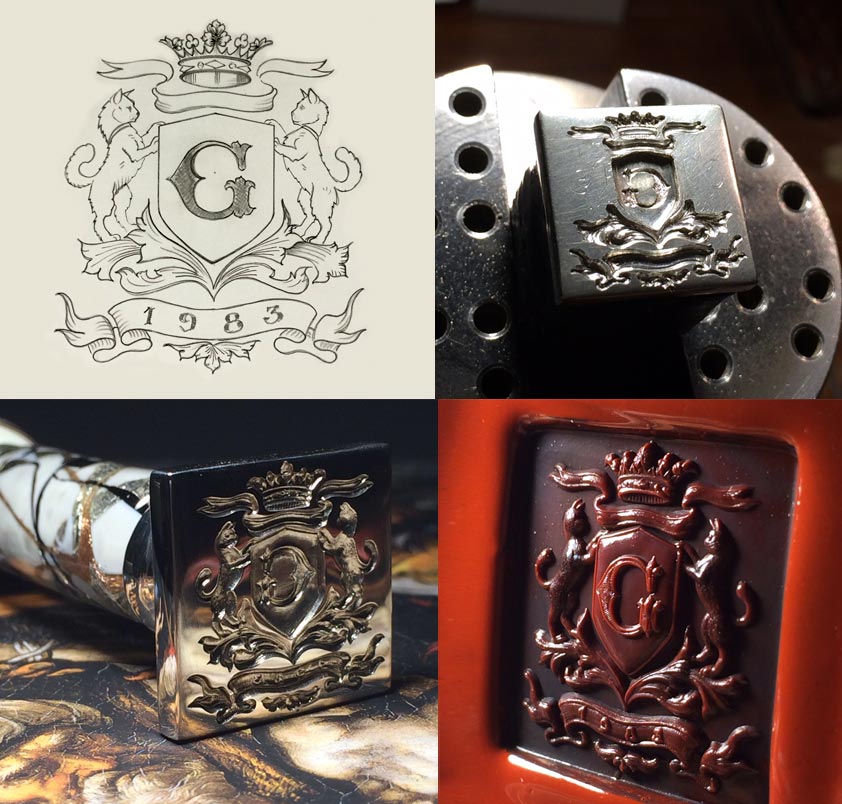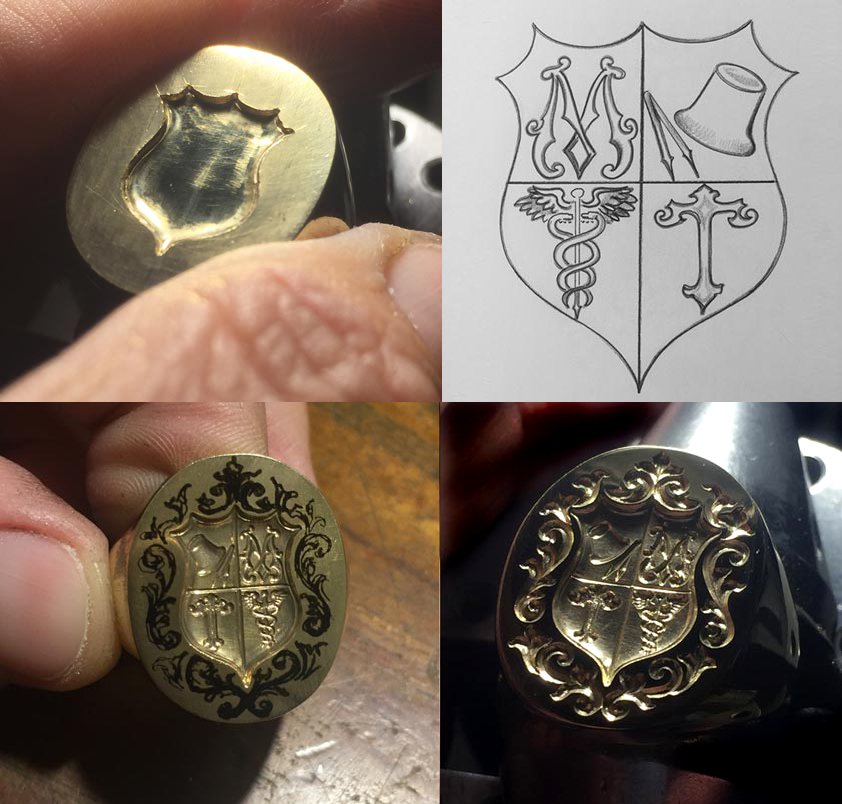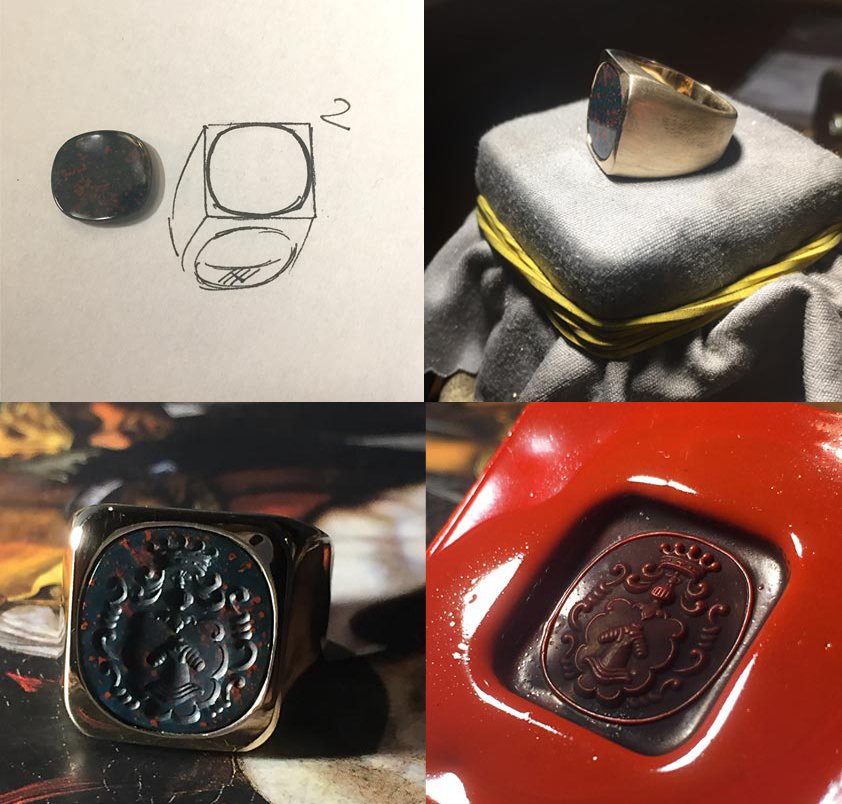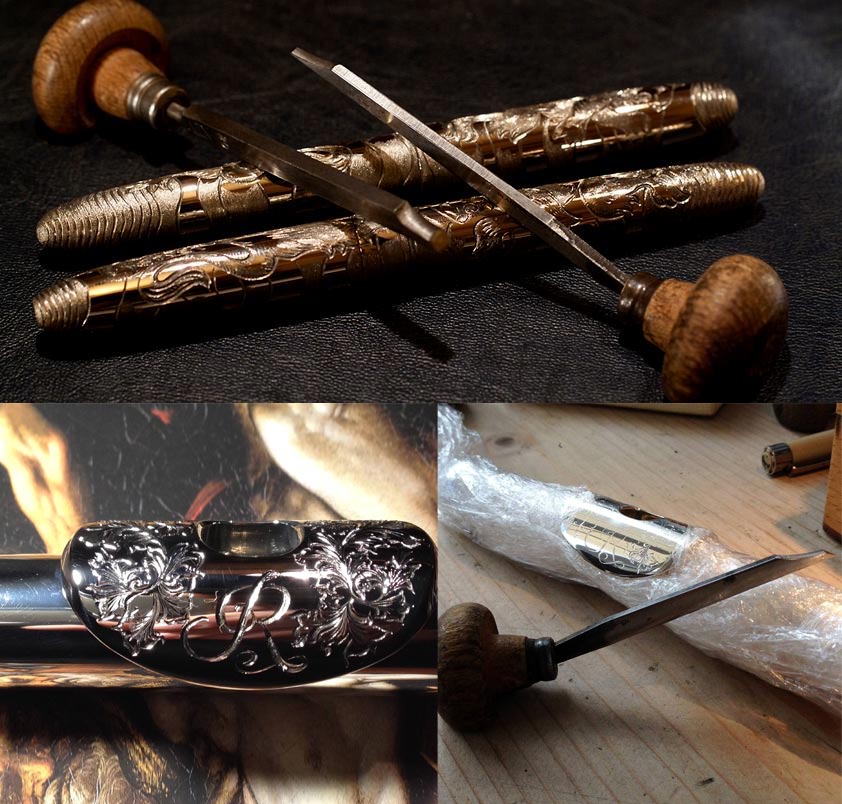
"The laboratory is a sacred place, where unique and original handcrafted creations take shape."
It is here that Stefania Nicastro Incisioni creates, it is in this cradle of goldsmith craftsmanship that seal rings, chevalier rings, engravings on noble metal and glyptic engravings on precious stones take shape. Artistic creations that often start, arise from a drawing or from a research on ancient books, from a bibliographic search.

Hand-crafted engraving is an activity that goes against the current trend where the watchwords are speed and automation. But it is always our world and our history. We try to follow this ancient technique by handcrafting and manually engraving on metals and precious stones. A technique that we have been practicing for over 25 years but that Vasari tells that since 1450 in Italy, in the workshops of Florentine goldsmiths, burin, damaging and niellation engravings were made.

Signet rings usually bear over their upper side the "mirror image" of a heraldic coat of arms or initials of the owner. In this way it could be possible to leave the signatures of owner impressing wax seals. These ring are made in a technique called" intaglio", consisting of cutting metals or stones with a burin (a steel cutting tool). Chevalier ring is the most common model of signet ring, with its upper side very flat allowing easy intaglio. The signet ring are jewels of great importance, symbols of family heritage, traditions and way of life. The wearing of signet ring (from Latin "signum" meaning sign) goes back to ancient Egypt. In those times the signature over the wax was obliged by the material of writing boards. Trough the centuries the habit of sealing private letters or important documents wasn't lost, but it is obvious that the importance of a jewel does not stay in its usefulness. Stefania Nicastro, engraving stones as well as metals, realizes.

The art of glyptic, an ancient goldsmith technique of engraving on semi-precious stones. The glyptic (from the Greek glyptos, "engraved") is a very ancient technique by which semi-precious stones and gems are engraved. In the goldsmith sector it is divided into two main categories, the recess engraving in the seals and in the intaglio stones, in relief in the cameos. In my old-fashioned creations I used agate, jasper, sardonyx, carnelian, rock crystal, amethyst and other precious stones. This technique has been known since ancient times, in fact one of the oldest finds found are the Mesopotamian Cylindrical Seals, precious objects created with the glyptic technique and dating back to the Sumerian-Babylonian era.

Hand-crafted engraving is an activity that goes against the current trend where the watchwords are speed and automation. But it is always our world and our history. We try to follow this ancient technique by handcrafting and manually engraving on metals and precious stones. A technique that we have been practicing for over 25 years but that Vasari tells that since 1450 in Italy, in the workshops of Florentine goldsmiths, burin, damaging and niellation engravings were made.
Artistic goldsmith engravings always arise from an idea, from an inspiration that takes shape first on paper in the form of a drawing and then hand-engraved with the art of the burin, in a completely handmade form, on precious metal. And then on paper it is possible to experiment with the various combinations of heraldic symbols in the construction phase of the coat of arms or better in the phase of its adaptation to the jewel, you want it a signet ring, a medal, a punch, a pair of cufflinks. Not to mention the passion and desire to design just for the sake of creating something new. To access the catalog of drawings click on the large image or on the following link Sketch gallery
The wax seal is the final expression of the chevaliere ring, also known as a signet ring. An act that allowed in ancient times to guarantee the integrity and authenticity of the engraving on which it was affixed but it is also for me a moment of verification of the accuracy of the engraving work carried out. It therefore always represents an archaic and exciting moment, very important to me and with great symbolism. To access part of the sealing wax I have kept, click on the large image or on the following link. Sealing wax gallery